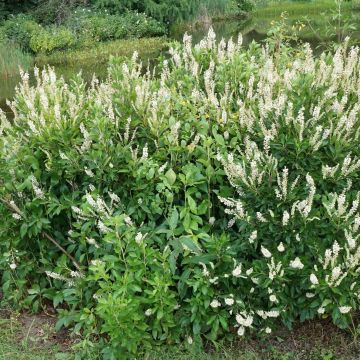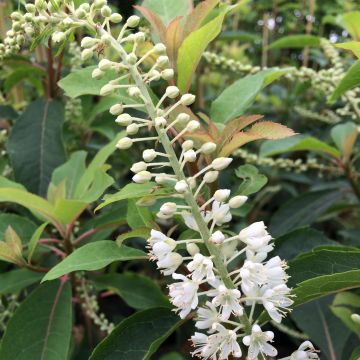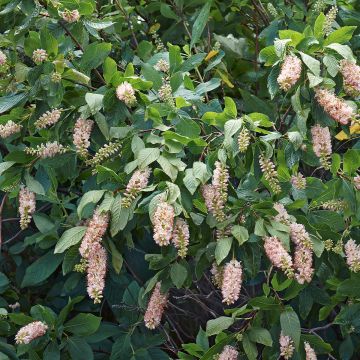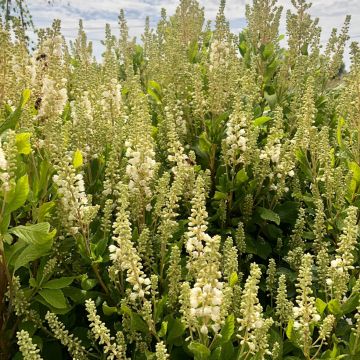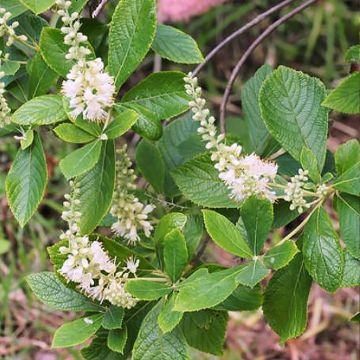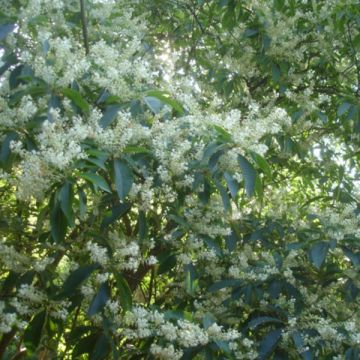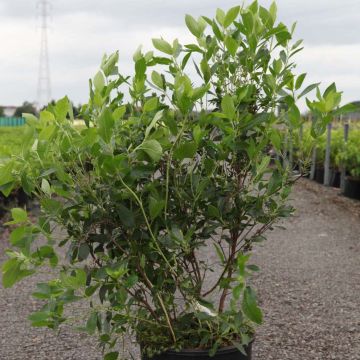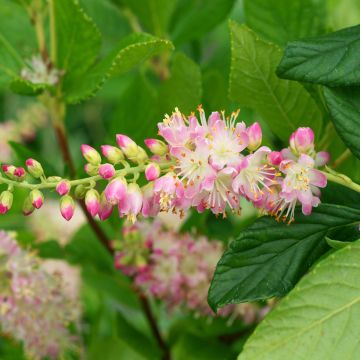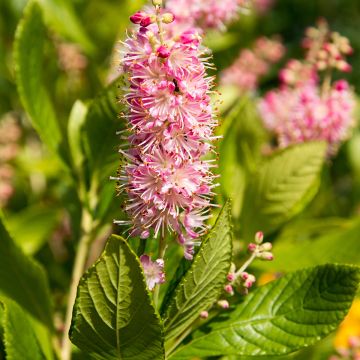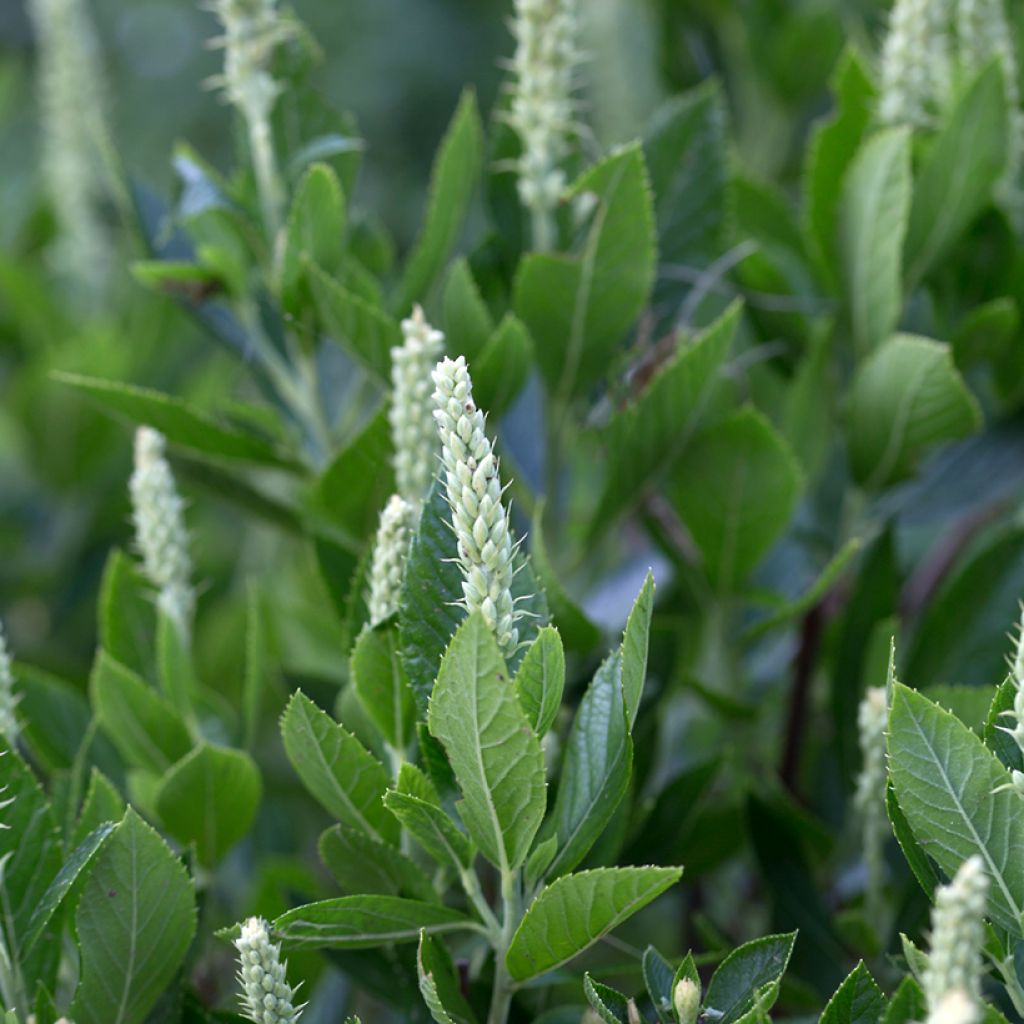

Clethra alnifolia Sixteen Candles
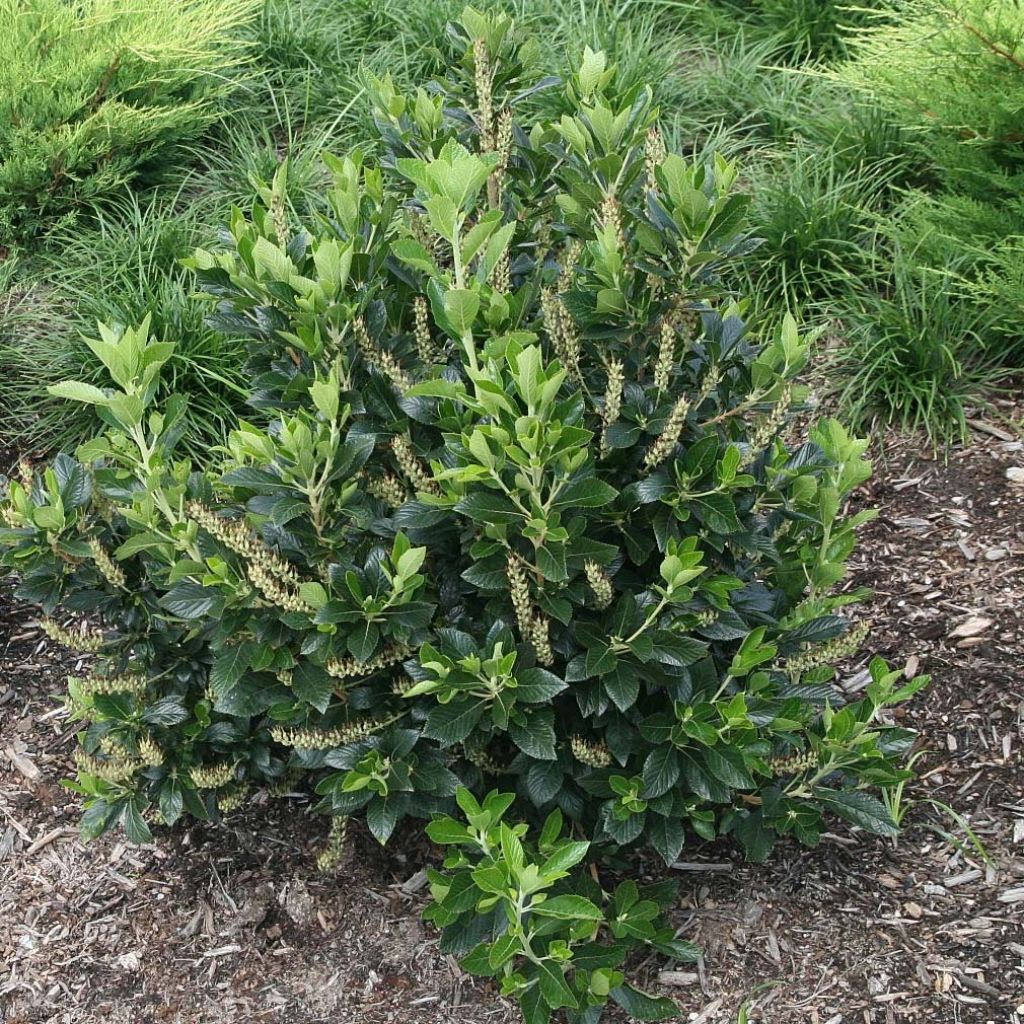

Clethra alnifolia Sixteen Candles
Clethra alnifolia Sixteen Candles
Clethra alnifolia Sixteen Candles
Panicled White Alder, Sweet Pepper Bush
This item cannot be shipped to the selected country
Delivery charge from €5.90
Delivery charge from €5.90
More information
Delivery charge from €5.90
Delivery charge from €5.90
More information
Schedule delivery date,
and select date in basket
This plant carries a 24 months recovery warranty
More information
We guarantee the quality of our plants for a full growing cycle, and will replace at our expense any plant that fails to recover under normal climatic and planting conditions.
From €5.90 for pickup delivery and €6.90 for home delivery
Express home delivery from €8.90.
From €5.90 for pickup delivery and €6.90 for home delivery
Express home delivery from €8.90.
Does this plant fit my garden?
Set up your Plantfit profile →
Description
The Clethra alnifolia 'Sixteen Candles' is a variety distinguished by the upright and straight shape of its white flower spikes. Its dwarf and compact habit also makes it suitable for containers or in isolation in small gardens. It blooms from July to August, producing abundant and highly fragrant flowers even in less sunny conditions. Its green foliage turns yellow in autumn, adding to its appeal. Use this bush to embellish the shadier areas of your garden in cool, non-calcareous soil.
The Clethra alnifolia is a small bush that grows spontaneously in the swampy forests of the United States' East Coast. It forms a small, dense, broad, rounded and slightly spreading bush, reaching a height of 2.50 m (8 ft 2 in) to 3 m (9 ft 10 in).
The 'Sixteen Candles' variety is a dwarf version of the Sweet Pepperbush. It forms a small compact bush about 90 cm (35.4 in) tall and 1.20 m (3 ft 11 in) wide, with a dense and stocky silhouette. When it likes its environment, it spreads through suckers to form small clusters. Its numerous and upright branches bear a deciduous foliage consisting of fine ovate, dentate, and glabrous leaves with strongly marked veins resembling those of the Alder, hence its vernacular name. The leaves appear late in spring in shades of yellowy green, changing to light green when mature. In autumn, the bush turns a quite decorative vibrant yellow before the foliage drops off.
The 'Sixteen Candles' Sweet Pepperbush stands out for its dwarf and compact habit as well as the abundance and markedly upright flowering habit. In July and August, the bush is adorned with numerous fairly straight white peaks about 15 cm (5.9 in) wide, giving them the appearance of candles. Its spiciform blooms consist of small bell-shaped flowers with feathery stamens that open from the bottom up along the clusters. The flowering of this dwarf Sweet Pepperbush is delicately fragrant and attracts butterflies, hummingbirds, and bees, creating a beneficial biodiversity in the garden! The flowers then give way to small brown capsules in September. This decorative fruiting persists on the bush until winter and provides a valuable source of food for birds.
Due to its origins, the Clethra alnifolia prefers shaded positions and cool, rich, and loose soil tending towards acidic. Its intolerance to heat and drought means it can only be planted in full sun in regions with moderately warm summers. Although the Sweet Pepperbushe variety can fully withstand shaded positions, its growth may be slower and its flowering less abundant. Highly disease-resistant and hardy (it can withstand temperatures of at least -15°C (5 °F)), this Clethra is easy to grow and will display its full splendour with minimal care!
In small gardens, the 'Sixteen Candles' Sweet Pepperbush can be planted in isolation and bring life to any space with its exceptional flowering and stunning autumn colours. This attractive small bush will also find its place in a bed of heathers combined with Japanese Azalea, Hydrangea macrophylla, or Hydrangea paniculata to spread and diversify the blooms. The Sweet Pepperbush can also be used as a low hedge in combination with shrubs with decorative foliage. Its suckers make it a valuable stabiliser of sloping land so that it will readily settle on sloped or wet areas, and develop into a small cluster. Its compact size allows it to be grown in pots to enhance terraces and balconies, subject to regular watering. Do not hesitate to plant it near a living or walking area to enjoy its delicate spicy fragrance!
Clethra alnifolia Sixteen Candles in pictures
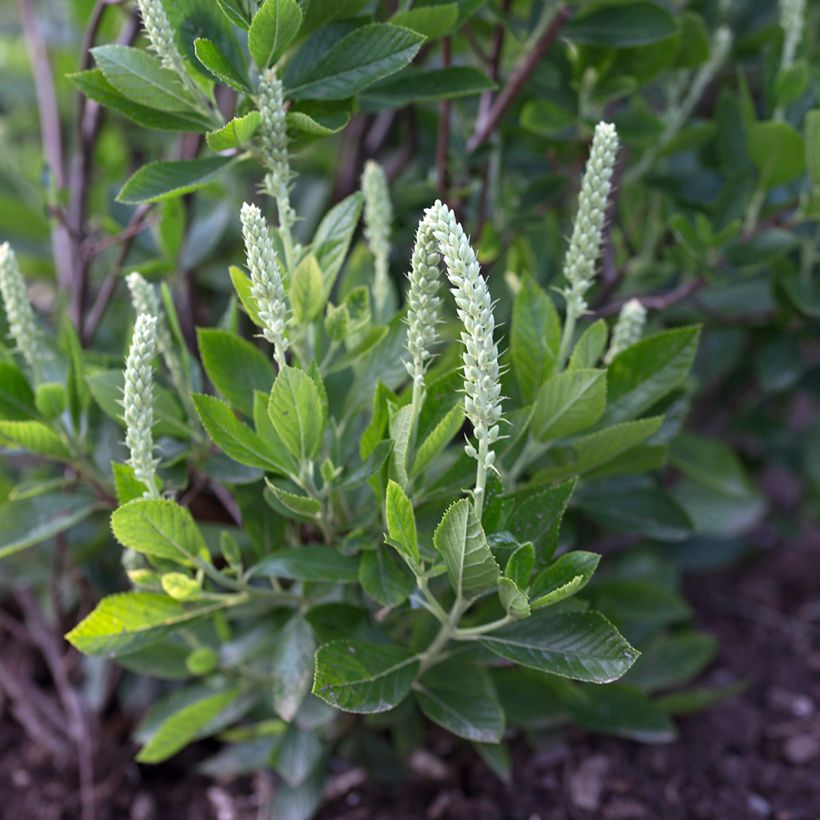

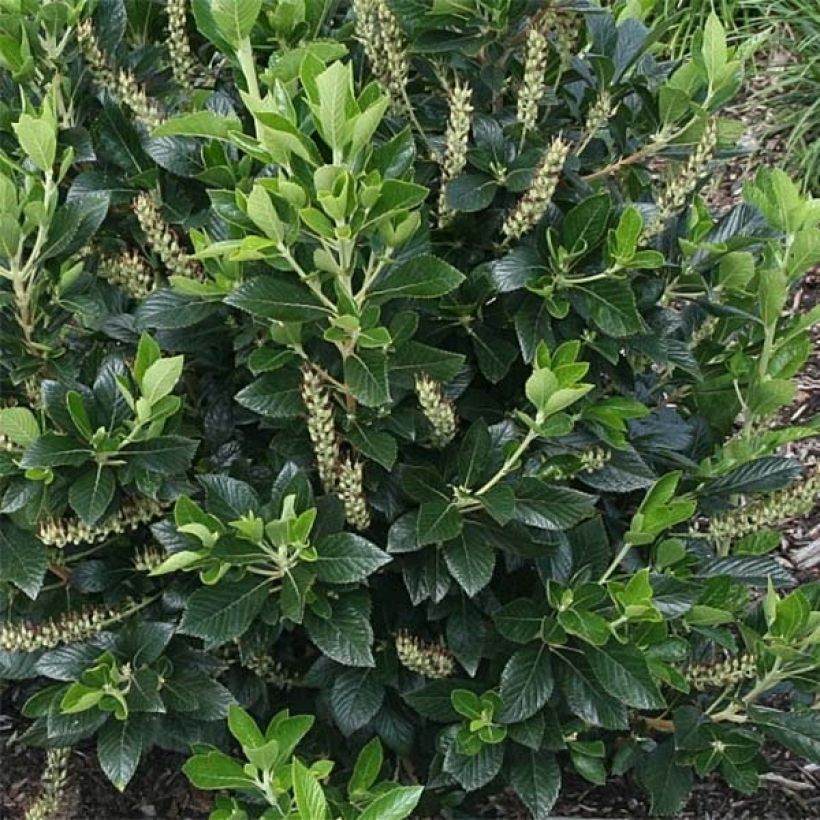

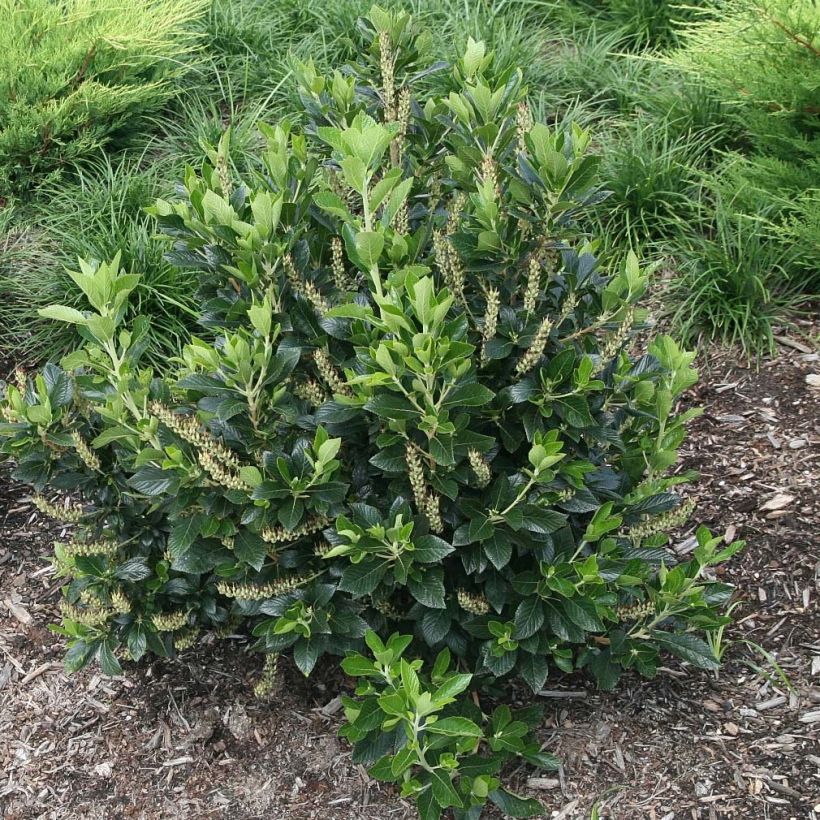

Plant habit
Flowering
Foliage
Botanical data
Clethra
alnifolia
Sixteen Candles
Clethraceae
Panicled White Alder, Sweet Pepper Bush
Cultivar or hybrid
Other Clethra
Planting and care
The Clethras alnifolia are native to the swamp forests of boreal America. They therefore prefer shaded locations and cool, rich and loose soil with an acidic tendency. Their intolerance to heat and drought means they can only be planted in full sun in regions with moderately warm summers. Although Clethras alnifolia can fully withstand shaded positions, their growth may be slower and their flowering less abundant.
Plant your Clethra alnifolia 'Sixteen Candles' in a generously wide hole. Mix turf or heather soil with your garden soil to lighten and acidify it. A mulch made of pine bark will help retain good moisture and a favourable pH level to plant growth. Water generously during the growing season, especially during the first two years after planting.
Pruning of Clethra alnifolia is done at the end of winter to remove any dead, diseased, or broken branches. It is also advisable to dead-head at the end of the flowering season to minimise energy expenditure for the bush.
Highly disease-resistant and hardy (it can withstand temperatures of at least -15°C (5 °F)), the Clethra alnifolia is enjoyable to grow and will offer all its splendour with minimal care!
Planting period
Intended location
Care
-
, onOrder confirmed
Reply from on Promesse de fleurs
Haven't found what you were looking for?
Hardiness is the lowest winter temperature a plant can endure without suffering serious damage or even dying. However, hardiness is affected by location (a sheltered area, such as a patio), protection (winter cover) and soil type (hardiness is improved by well-drained soil).

Photo Sharing Terms & Conditions
In order to encourage gardeners to interact and share their experiences, Promesse de fleurs offers various media enabling content to be uploaded onto its Site - in particular via the ‘Photo sharing’ module.
The User agrees to refrain from:
- Posting any content that is illegal, prejudicial, insulting, racist, inciteful to hatred, revisionist, contrary to public decency, that infringes on privacy or on the privacy rights of third parties, in particular the publicity rights of persons and goods, intellectual property rights, or the right to privacy.
- Submitting content on behalf of a third party;
- Impersonate the identity of a third party and/or publish any personal information about a third party;
In general, the User undertakes to refrain from any unethical behaviour.
All Content (in particular text, comments, files, images, photos, videos, creative works, etc.), which may be subject to property or intellectual property rights, image or other private rights, shall remain the property of the User, subject to the limited rights granted by the terms of the licence granted by Promesse de fleurs as stated below. Users are at liberty to publish or not to publish such Content on the Site, notably via the ‘Photo Sharing’ facility, and accept that this Content shall be made public and freely accessible, notably on the Internet.
Users further acknowledge, undertake to have ,and guarantee that they hold all necessary rights and permissions to publish such material on the Site, in particular with regard to the legislation in force pertaining to any privacy, property, intellectual property, image, or contractual rights, or rights of any other nature. By publishing such Content on the Site, Users acknowledge accepting full liability as publishers of the Content within the meaning of the law, and grant Promesse de fleurs, free of charge, an inclusive, worldwide licence for the said Content for the entire duration of its publication, including all reproduction, representation, up/downloading, displaying, performing, transmission, and storage rights.
Users also grant permission for their name to be linked to the Content and accept that this link may not always be made available.
By engaging in posting material, Users consent to their Content becoming automatically accessible on the Internet, in particular on other sites and/or blogs and/or web pages of the Promesse de fleurs site, including in particular social pages and the Promesse de fleurs catalogue.
Users may secure the removal of entrusted content free of charge by issuing a simple request via our contact form.

































